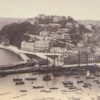
Troy J. Bassett, “‘More than a Bookseller’: Iredale’s Library as the Center of Provincial Literary Life”
Andrew Iredale welcomed Her Royal Highness Princess Victoria and her cousins to his library in Toquay, Devon on 1 September 1898 where the group bought books and photographs. Founded by Iredale in 1872, Iredale’s Library became the “centre of literary life” in the seaside resort community well into the twentieth century. This article considers the circulating library’s role in the community: in addition to selling and lending books, the library served as a place for public and private meetings, third-party business transactions, and interpersonal networking. As the history of Iredale’s Library illustrates, provincial circulating libraries played a vital role in communities well beyond their money-making operations.
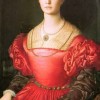
Jill R. Ehnenn, “On Art Objects and Women’s Words: Ekphrasis in Vernon Lee (1887), Graham R. Tomson (1889), and Michael Field (1892)”
Studies of women’s ekphrasis prior to modernism have, so far, tended to focus on individual women writers rather than attempt to identify trends that female authors from a particular time period might share. This essay intervenes in this gap in the scholarship by analyzing ekphrastic prose and poetry by Vernon Lee, Graham R. Tomson, and the co-authors who wrote as Michael Field. As female Aesthetes well-versed in art history and art criticism, as well as contemporary market practices, these nineteenth-century women writers anticipate today’s feminist theorists in the ways in which they were quite conscious of woman’s role as art object and the various functions of that role.
Here I examine Vernon Lee’s somewhat well-known novella Amour Dure (1887) as a foundational case study and then turn to two considerably lesser studied poems: Graham R. Tomson’s “A Silhouette” (1889) and Michael Field’s “Saint Katharine of Alexandria” (1892), for which I also identify the long-lost ekphrastic referent. These three texts all demonstrate how a specific form of aesthetic intertextuality—ekphrastic representational friction—operates as a powerful vehicle for early feminist criticism. In the examples I discuss, gendered critiques drive representational friction between the word, the visual medium, and its original referent—slippages that these art-savvy authors would have easily recognized and had opinions about in the work of others, and intentionally created and/or appropriated in their own work. Importantly, I also argue that a helpful way to think about ekphrastic writing by women writers associated with nineteenth-century British Aestheticism is to consider representational friction with particular regard to how their texts treat objects—seemingly unimportant objects—associated with their subjects.
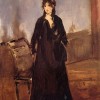
Elizabeth Berkowitz, “The 1910 ‘Manet and the Post – Impressionists’ Exhibition: Importance and Critical Issues”
“The 1910 ‘Manet and the Post-Impressionists’ Exhibition: Importance and Critical Issues” summarizes both the key historical aspects of the 1910 “Manet and the Post-Impressionists” exhibition, and the historiographic disputes that have arisen in relation to it. This article addresses the degree to which the term and art historical category “Post-Impressionism,” coined for this exhibition, represents a critical construction, rather than a genuine stylistic demarcation. In addition, this article counters the scholarly misperception that the vitriolic response to the 1910 exhibition was a product of British cultural ignorance of late-nineteenth- and early-twentieth-century continental Modern art.
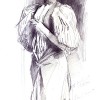
Meaghan Clarke, “1894: The Year of the New Woman Art Critic”
In 1894, satirical journals such as Punch mockingly identified the phenomenon of the New Woman, as found in novels, plays and articles, as an intellectual and independent figure. These mannish representations of professional women seem impossible to reconcile with the aesthetic and fashionable realms of late Victorian art and culture. Studies have frequently considered the role of Victorian women as models or sitters—objects of a male artist’s inspiration. However, other career paths for women were possible. Many women were successful artists and an alternative entrée into the art world was journalism. This article will posit that women art journalists provided a living example of professional opportunities for intellectual New Women. Although their work has been largely left out of accounts of the period, they contributed to key developments in art history at the end of the century. To begin with, I will touch on the history of art writing and its development as a professional avenue for women. Then, I will explore specific themes in order to consider the diversity of their critical responses to contemporary British art circa 1894. This will encompass women’s writings on Pre-Raphaelite and academic artists as “celebrities,” groups influenced by French Impressionism in Newlyn and St. Ives, London Impressionists and Glasgow Boys, as well as art and culture beyond Britain.
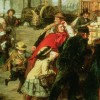
Nancy Rose Marshall, “On William Powell Frith’s Railway Station, April 1862″
William Powell Frith’s oil painting, The Railway Station (1862), is an enlightening case study of the pressures and conditions that formed an art viewer in the second half of the nineteenth century in London. A painting of a contemporary urban crowd, displayed for that same crowd in a novel single-picture exhibition, has much to tell us about the emergence of modern structures of seeing and living based on new configurations of money, time, and space.

Julie Codell, “On the Grosvenor Gallery, 1877-90”
The Grosvenor Gallery (1877-90), founded by Sir Coutts Lindsay and Lady Caroline Blanche Elizabeth Fitzroy (a Rothschild on her mother’s side) on 135-37 New Bond Street in London, generated a seismic change in the conventional Victorian art world in its exhibition of then avant-garde artists like Edward Burne-Jones, James McNeill Whistler and G. F Watts, and other leading members of the Aesthetic Movement, such as Frederic Leighton. Its unique methods of display, invitations to exhibit, support of women artists, and stunning building and interior decoration marked its ties to the Aesthetic Movement and its challenge to the Royal Academy.
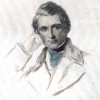
Amy Woodson-Boulton, “The City Art Museum Movement and the Social Role of Art”
British art museums developed along substantially different lines than those in Continental Europe. Rather than create a centrally supported or designed system of cultural provision, the British Parliament passed permissive legislation in the middle of the nineteenth century that allowed localities to choose to establish public libraries and museums. Cities thus founded art museums independently, at the instigation of committed local reformers and benefactors, while most national institutions proceeded by Parliamentary acts rather than through the nationalization of royal collections. A generation later, inspired by the works of John Ruskin and the new aesthetic of Pre-Raphaelitism, many men (and some women) pushed their cities to create art museums not primarily as a means to educate the public about art history, but to counteract the toxic effects of the moral and physical ugliness of industrial capitalism, and of industrial cities in particular. The resulting institutions formed a new kind of domesticated public space, bringing together ideas about the middle-class home as a refuge and about beauty as a means of “improving” the working classes. However, John Ruskin himself often criticized these efforts as too accommodating of industrial society.
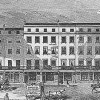
Pamela Fletcher, “On the Rise of the Commercial Art Gallery in London”
The modern commercial art gallery emerged as a distinct institutional form in the middle years of the nineteenth century, profoundly changing the physical, economic and social relationships between artists, dealers, art objects, and viewers.
